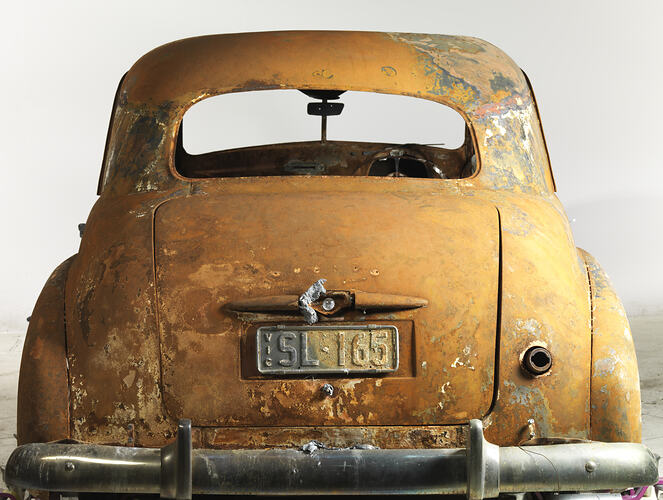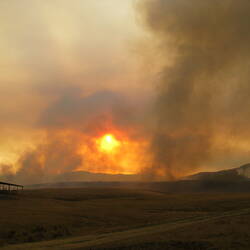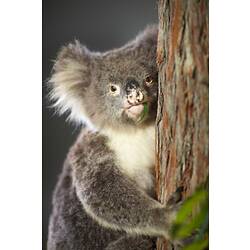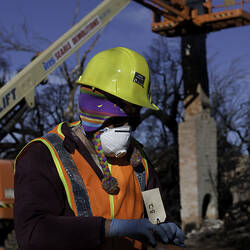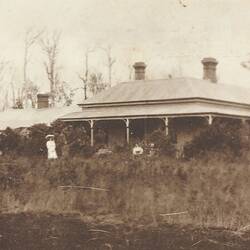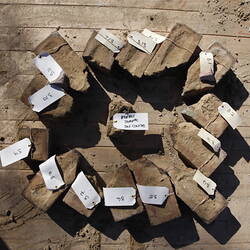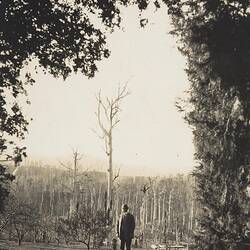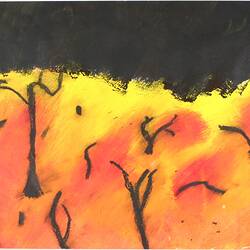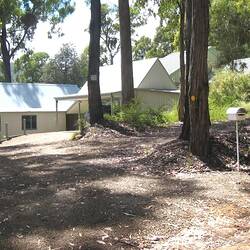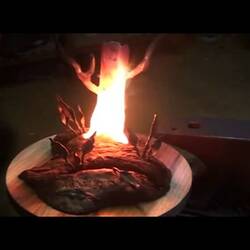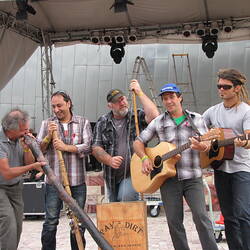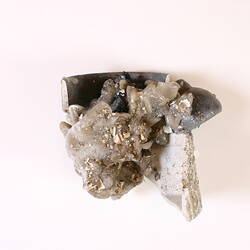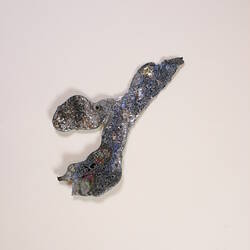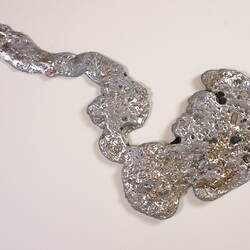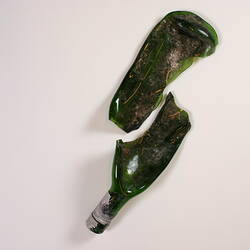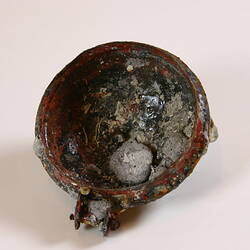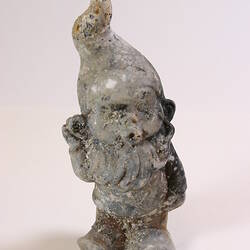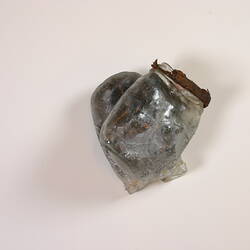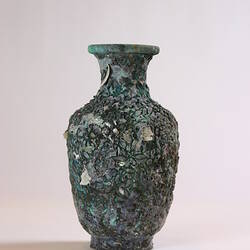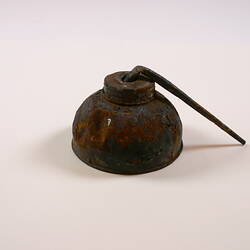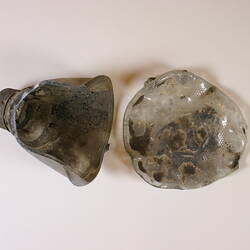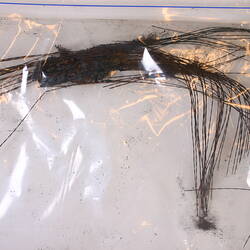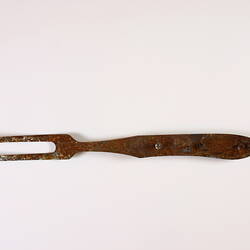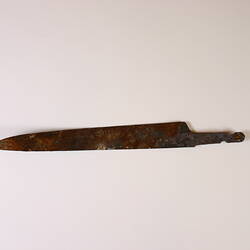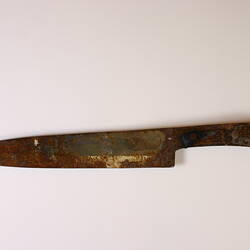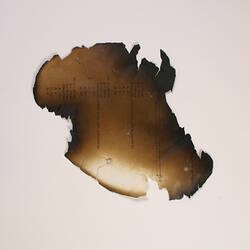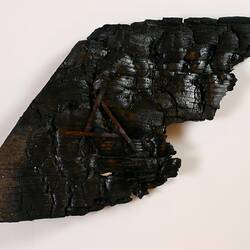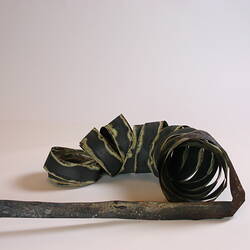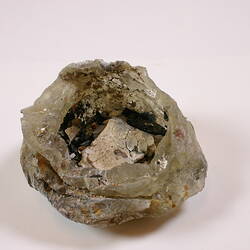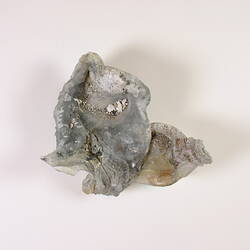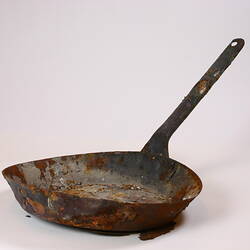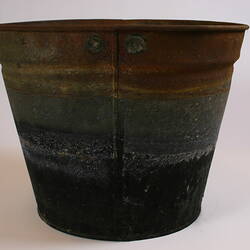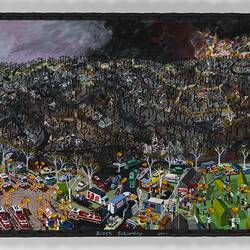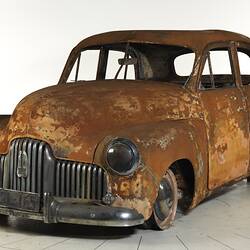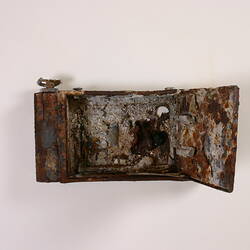Black Saturday, 7 February 2009, was the greatest natural disaster in Australia's recorded history. In the weeks following the bushfires, Museum Victoria set up the Victorian Bushfires Collection to preserve and document the impact of the Black Saturday bushfires, the community response, the aftermath and the process of recovery and renewal. While the immediate focus was 2009, the collection also documents previous Victorian bushfires.
There were a number of important aims in establishing this contemporary and cross-disciplinary collecting project - to contribute to civic healing through active community participation, commemoration and the sharing of stories, and to foster greater public understanding of bushfires, how they have shaped the history and landscape of Victoria, and will continue to do so.
The collection includes bushfire-damaged objects, emergency services equipment, oral histories, artwork, photographs, videos, natural science specimens, and material from public education campaigns.
Significant items include:
- A letter written in 1851 that talks about the experience of Victoria's first major bushfire
- Over 80 interviews from nearly all of the 2009 bushfire affected areas, including the personal recollections and poem from a 101 year old woman who lived through the 1919, 1939 and 2009 bushfires
- A burnt-out 1950 FX Holden 48-215, part of a collection of vintage motor cars destroyed in the Churchill fire
- A chimney from Kinglake, all that remained of the nineteenth-century homestead 'The Uplands', currently installed in the Forest Gallery at Melbourne Museum
- Burned and melted domestic objects, from a Box Brownie camera to a child's bicycle
- 'Black Saturday', a painting of Marysville by Glenn Morgan
- Birds that 'fell out of the sky' during the 1983 Ash Wednesday bushfires
- Material relating to the endangered Leadbeater's Possum, Victoria's state faunal emblem
- Sam the Koala, a koala that became a public symbol of hope and resilience in the aftermath of the fires, currently on dispaly at Melbourne Museum
- A 'Thank You' sculpture that was donated to the People of Victoria at the Thank You Melbourne and Victoria concert of 7 April 2010
- Cards and posters sent to patients and staff at the Alfred Hospital Burns Unit
The collection offers rich research opportunities, including: the lived experience of fire across Victoria; community and government attitudes to bushfire; the cultural response to bushfire; natural resource management; wildlife rescue; the role of volunteers, schools and communities; the role of media following disasters; bushfire education and response; the complex and ongoing trauma following disasters; geographic diversity of experience; climate change; fire preparation and response; house design and urban planning; emergency response and changes in technologies and methods; the role of art and symbols in healing; memorialising of history; community participation in contemporary collecting; use of oral history to document major disasters; conservation of bushfire affected collections; and the role of museums following natural disasters.
The collection will continue to grow as it documents the reconstruction efforts, changing patterns of bushfire response and the effect of climate change on how we understand and engage with the difficult and inevitable reality of bushfire.
More Information
-
Keywords
Ash Wednesday Bushfires, 1983, Australian Native Animals, Black Friday Bushfires, 1939, Black Saturday Bushfires, 2009, Black Thursday Bushfires, 1851, Bushfire Prevention, Bushfires, Climate Change, Community Organisations, Death & Mourning, Domestic Life, Emergency Services, Environmental Issues, Fire Brigades, Fire Fighters, Fire Safety, Forestry, Government Policies, Natural Disasters, Natural Environment, Ruins, Rural Landscapes, Rural Life, Rural Victoria, Safety Campaigns, Sustainability, Tourism, Volunteers, Wildlife, Wildlife Rescue
-
Localities
-
Authors
-
Article types
